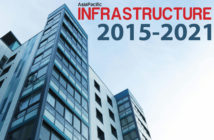Ahead of the 2023 election, Infrastructure New Zealand is developing a set of policy positions which will act as the starting point for the important conversations we need to have to improve the current state of play in our sector, Policy Advisor Martina Moroney says

At present, Aotearoa New Zealand faces a number of challenges to meet current and future infrastructure needs. To unlock the level of investment needed to address these, and deliver the infrastructure that we so urgently need, the challenge we put forward is the need to change our political, planning and funding systems to deliver better long-term, sustainable outcomes for New Zealanders. But we must not lose sight of what we have. We can do better at utilising private capital and leveraging partnerships between Māori, central and local government, and the private sector to address a range of ongoing challenges, including our existing infrastructure deficit.
Improved utilisation of private capital
In our ‘private capital’ paper, we outline that the Government cannot deliver everything simultaneously itself and will not be able to fund its way out of New Zealand’s more than $210 billion infrastructure deficit. The private sector is well-placed to provide significant support in delivering the country’s infrastructure needs through its delivery capacity and capability, flexibility to scale up quickly where there is increasing demand, the size of its finance pool, its commercial discipline and sophistication, and its industry and technical know-how. A partnership approach between the Government and the private sector would enhance delivery capability, transfer key risks of deliverability to the private sector as well as the ability to bring forward significant infrastructure projects that do not currently have funding committed. Using private capital can come in many ways, such as private-public partnerships, a leasing model, and soft loans.
Infrastructure New Zealand makes two recommendations. The Government should review its current approach to using private capital for public infrastructure and improve its utilisation of private capital while still ensuring Crown ownership remains. The Government should explore the potential of different models to attract private capital to enable it to deliver a much larger portfolio of infrastructure projects.
Better use of current tools
In our ‘better use of current tools’ position paper, we identify that local government in particular is responsible for about half of all infrastructure spend. However, many councils are unable to borrow more money to finance the infrastructure they need to keep up with population growth, large asset renewals, or service quality upgrades. In particular, our cities have faced significant growth pressures over the last decade and have struggled to respond.
Part of this problem is that we are not good at using the funding and financing tools we have, such as special purpose vehicles through the Infrastructure Funding and Financing Act and specified development projects under the Urban Development Act. For example, after being introduced in the middle of 2020, it was only late last year that the first Infrastructure Funding and Financing project was confirmed for Tauranga towards thirteen transport projects across the region. We are also yet to see any specified development projects confirmed, although Kāinga Ora is currently assessing two projects – Western Corridor in Tauranga and the Northern Growth Area. However, it has been over six months since these have been selected for assessment.
To improve the use of these tools, we need to review them and simplify the process. We also need to see councils better supported in navigating the steps required. Enabling greater accessibility and usability of current tools will be critical to improved infrastructure development. Further, there is a need to look closely at Kāinga Ora’s role in enabling urban development projects through the Urban Development Act. Kāinga Ora have a significant role to play in partnering with private developers to bring forward complex projects.
Better local government
More fundamentally, we need to acknowledge the misalignment of incentives. We must take a step back and look at the conditions underscoring underinvestment at the local government level.
In our ‘better local government’ paper, we outline how current local government settings separate planning and funding functions. This creates incentives that are fundamentally misaligned fiscally, financially, and structurally.
Central and local government both face different (and often competing) motivations. Local government’s primary source of revenue – rates – is detached from council performance and is instead linked to voters’ priorities, which often focus on vertical infrastructure with tangible outcomes and near-term impact rather than much-needed horizontal infrastructure. Local government is also at odds with central government who gets direct benefits from improved economic performance and is incentivised to proactively pursue economic growth. As a result, we lack a certain and built-out pipeline that would allow the sector to gear up to deliver on the infrastructure that New Zealand urgently needs.
We also note that there is a misalignment of incentives at a regional level. Central government entities with national objectives are performing functions with localised impacts. Local government entities without scale or resources are providing services with regional and national impacts. Neither are optimised to respond to the communities they are affecting, and no one is delivering regional outcomes.
It is our view that there is a need to fundamentally re-align incentives. INZ recommends empowering regional government with functions that have spatial effects, with local governance being refocused on community wellbeing and service delivery. To support this reallocation of roles, a joined-up funding and financing approach that enables infrastructure delivery and certainty for the sector is required. Regional deals, based on city deal-style arrangements, would allow regional bodies to engage with central government to agree regional outcomes, negotiate greater certainty of funding and drive growth in the long-term through the delivery of infrastructure projects which increase the region’s economic capacity. Stronger alignment on regional outcomes can provide a basis for central government to explore new funding tools such as bed taxes or sharing of GST on new builds.







